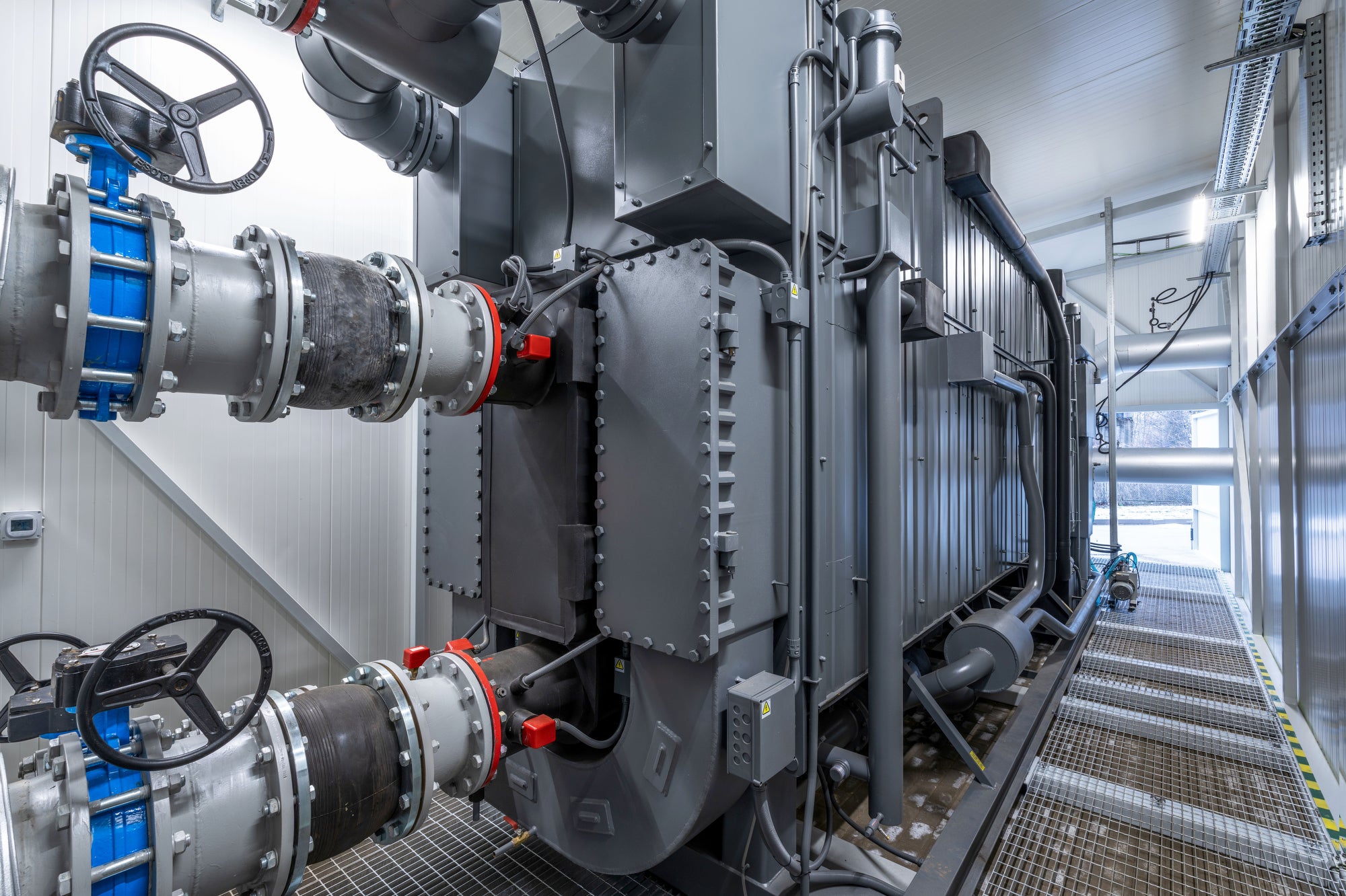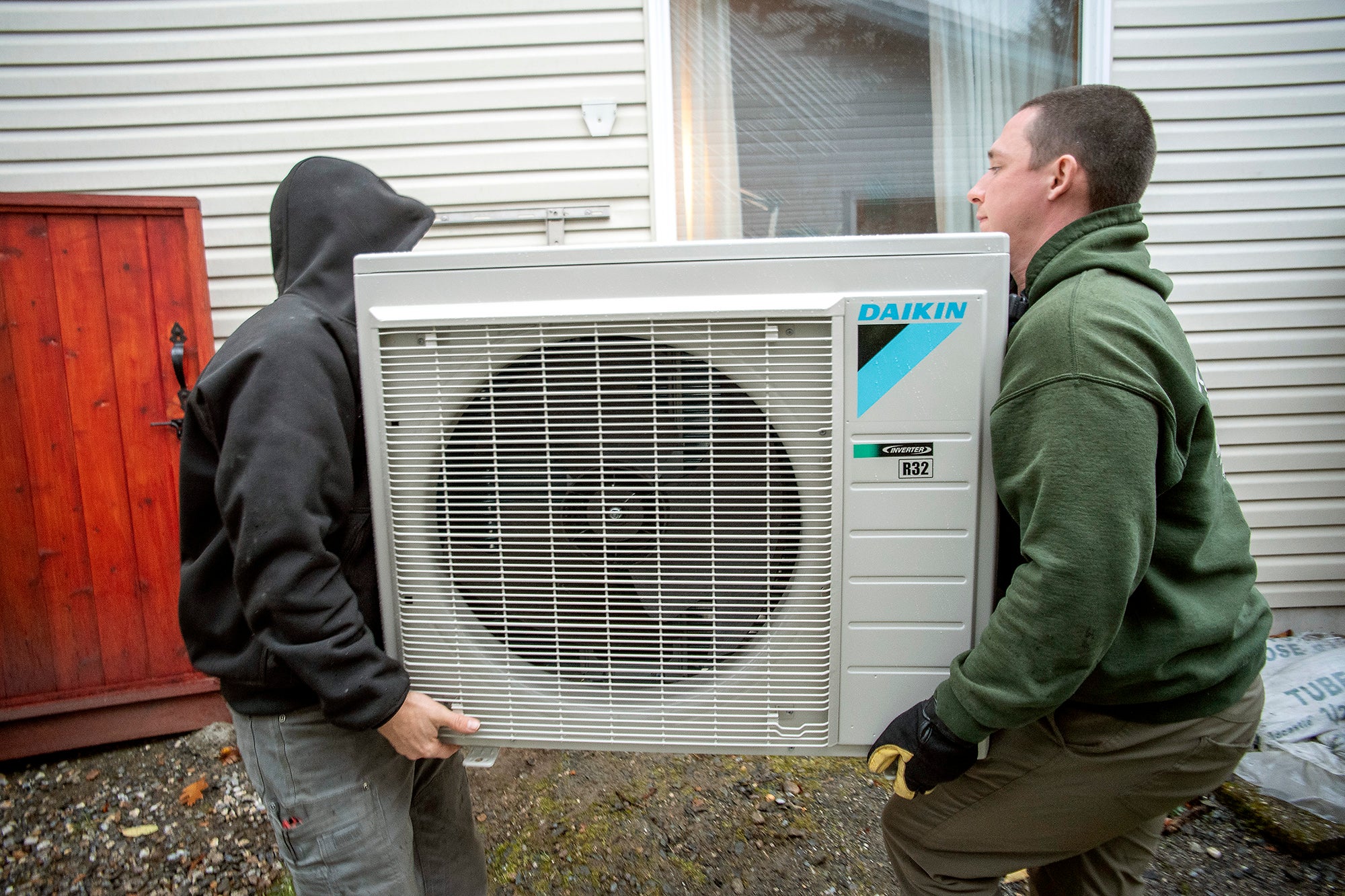Southern California Can Boil Water Without Boiling the Planet
Efficient, modern, and clean. Heat pumps are heading for the industrial and commercial sectors in the nation’s manufacturing hub.
Can you imagine anything more scintillating than industrial boilers and water heaters? Anything more intriguing than something called Rule 1146.2? Okay, you probably can. But if earth is your home planet – and especially if you live in Southern California and breathe air – these seemingly esoteric subjects matter a lot.
Air pollution comes from many types of sources – some mobile, like cars, trucks and buses, and some stationary, like factories and refineries. Those stationary sources of pollution and planet-warming greenhouse gas emissions come in a variety of shapes and sizes, and controlling that pollution requires rules that are both relevant and feasible for particular types of pollution sources.
That’s where the South Coast Air Quality Management District’s Rule 1146.2 comes in. Passed by Southern California’s Air Board on June 7, this rule will make a big difference in air quality in one of the nation’s smoggiest regions and help cut greenhouse gas emissions as well.
The pollution sources most of us think about tend to be visible and obvious, like big diesel trucks or industrial facilities with smokestacks, but large boilers and water heaters can be major sources of pollution even though they’re often less visible, and sometimes hiding in plain sight. They are used in a variety of industrial processes as well as to heat swimming pools and spas, among other things. Most now run on fossil gas and belch a variety of pollutants, including nitrogen oxides and lung-damaging PM 2.5 particulates, into the air. They also spew out planet-warming CO2.
The South Coast AQMD has long had a rule governing these boilers and water heaters, but that rule was adopted way back in January 1998. A lot has changed since the 1990s and the AQMD, to its credit, has recognized that it’s time for an update that addresses the changing landscape in terms of both California’s air pollution problems and the major advances in zero-emissions technology that have taken place in the last 26 years.

A lithium bromide absorption heat pump, used to recover waste heat to produce hot water or steam for heating and industrial processes. (imantsu / Getty Images)
That updated rule, Rule 1146.2, will take major steps toward cleaning Southern California’s air while allowing those operating these industrial boilers and water heaters the time to install clean technology. This proposal represents the agency’s biggest emission-reducing rule in one of the nation’s most polluted areas since 2021, and it’s the agency’s first rule mandating zero emissions in every category of facility it covers. It covers more than a million pieces of equipment and, when fully implemented, will take 5.6 tons of lung searing nitrogen oxides out of Southern California’s air every day.
Southern California can do this because heat pump technology has advanced to the point where we simply don’t have to burn methane gas to heat water anymore. Factories and other facilities can do what they need to for a wide variety of applications while producing zero NOx, zero particulates, and zero greenhouse gases at the source. It’s time to start doing it.
Heat pumps first gained widespread attention as an efficient, zero-emission form of home heating and air conditioning, and their use in that area is expanding rapidly as consumers snap them up (last year heat pumps outsold gas furnaces for the second year in a row). But heat pumps can heat water for both industrial and residential uses.

Sonny Ashby, left, and Robby Brian, of Alaska Plumbing and Heating, install a heat pump in Juneau, Alaska. (Michael Penn for Earthjustice)
Rule 1146.2 sensibly phases them in gradually – first for new buildings and eventually for all buildings, with varied deadlines based on the type of facility and the availability of the type of equipment they need. For example, the smallest units – the ones now most readily available commercially – must be used in new buildings starting January 1, 2026, and in older buildings starting January 1, 2029. Larger units, pool heaters, and high temperature units have later implementation dates, some as far out as 2033.
This is a sensible, carefully crafted rule. Unfortunately, some business groups successfully pushed for delays earlier in the process and would still like to slow things down. Earthjustice and our allies have continued to resist such attempts, because our air and our climate simply cannot wait. Stationary sources account for roughly one fifth of the South Coast Air Basin’s NOx pollution, and we can’t have truly clean, breathable air – and meet the goals of the 2022 Air Quality Management Plan – without zeroing them out every feasible. The equipment covered under this rule is one of the imminently feasible places.
Of course, installing new equipment costs money. That’s one of the reasons Rule 1146.2 spreads out implementation over nearly a decade. But heat pumps are way more economical to operate than old-school gas boilers. The fuel savings produced by replacing gas-fired water heaters and boilers with heat pumps erases much of that cost over time, and in some cases works out to actually save money over the life of the equipment – a classic case of spending money in the short run to save over the long haul.
The AQMD should be proud of the work it has done creating this updated rule, listening to stakeholders, and developing a plan that makes sense for all concerned, while taking a bold step to clean Southern California’s air and bolster the fight against climate change. We’re celebrating its passage of this landmark measure, and will keep a close eye on progress as California eyes an electric future.
The California Regional Office fights for the rights of all to a healthy environment regardless of where in the state they live; we fight to protect the magnificent natural spaces and wildlife found in California; and we fight to transition California to a zero-emissions future where cars, trucks, buildings, and power plants run on clean energy, not fossil fuels.
